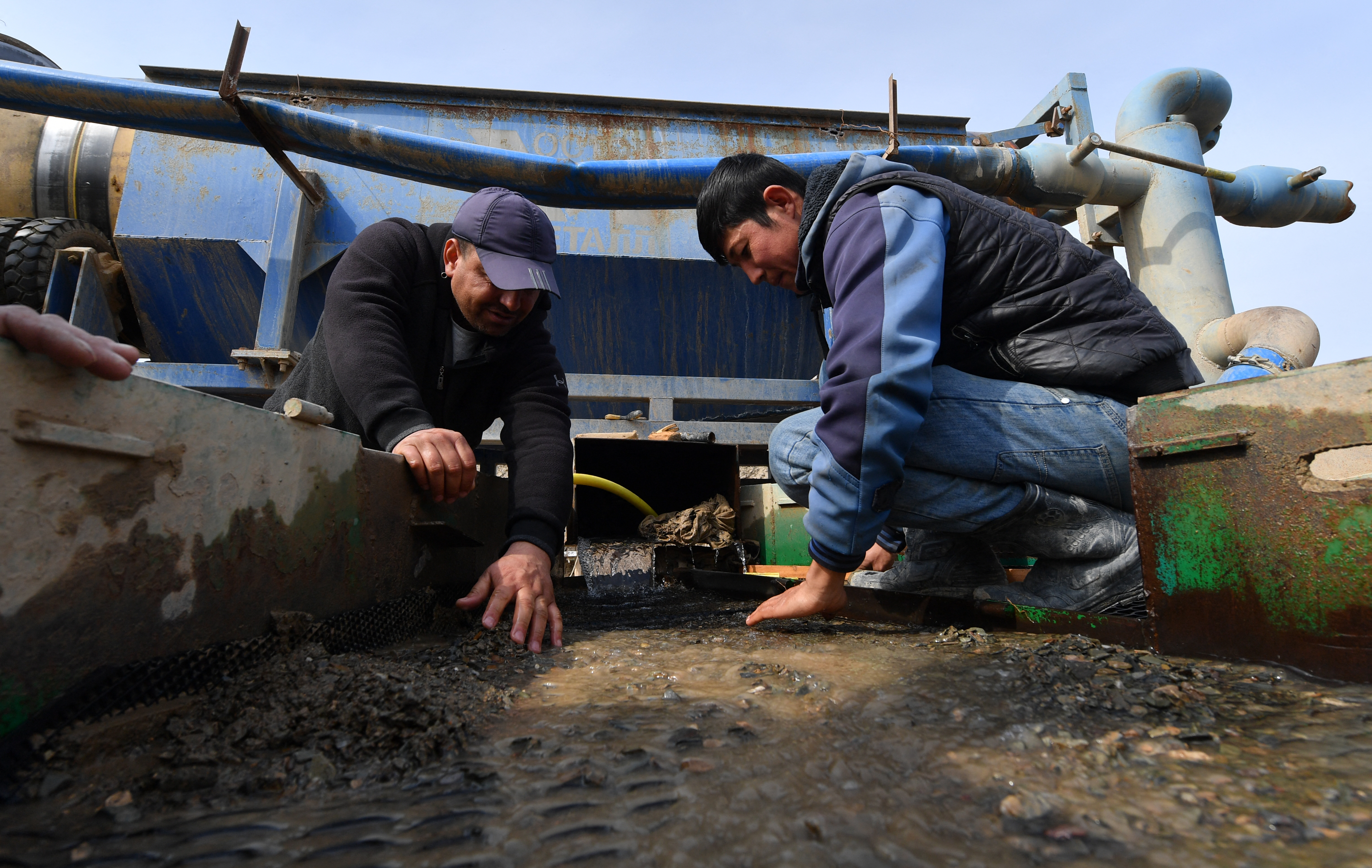
Gold traceability, the weak link in Swiss watchmaking

Switzerland’s luxury watch industry is a global benchmark of craftsmanship, precision and prestige. But where do its raw materials – especially gold – actually come from? There is no easy answer.
In early 2025, the Watch & Jewellery Initiative 2030, a coalition of 72 watches and jewellery brands, published its annual stakeholder report, introducing a new framework to help brands build climate resilience, preserve resources and improve supply chain accountability. The move signals growing momentum within the industry to address its sustainability blind spots, including gold sourcing.
Many Swiss watchmakers still struggle to trace the origins of the precious metals they rely on. A 2023 WWF report found that even some of the industry’s best-performing brands fall short on transparency. The lack of clear answers raises concerns about environmental destruction, labour rights abuses and greenwashing.
“Imagine you went into a supermarket and they said sorry, we have no clue where our groceries comes from… That’s where we’re at right now in the watch and jewellery sector,” says Olivia Lipsky, sustainability expert at WWF Switzerland.
The reasons are mostly inherent to the gold industry where traceability is complicated and costly. Most watchmakers don’t consider it a priority area for investment.
Although regulations and customers’ awareness have evolved, they still fall short of pressuring brands to indicate the origins of the gold they use in the watches they sell. “I advise customers to ask brands where the gold in their watches comes from before they buy,” says Lipsky. But most brands will be unable to answer, she says.
The traceability gap
Switzerland refines about one-third of the world’s gold, and the watch and jewellery sector consumes around 50% of global gold demand. Yet tracing the origin of this gold remains a complex challenge – one that most brands are not fully prepared to face.
“Gold is particularly difficult to trace because it can be melted many times,” says Lipsky. “This allows for gold from illegal mining to hide its origins and find a way into legal streams,” she adds.
Due to this versatility, illegal gold often finds its way to the market. “When you look at export numbers from South American countries like Colombia, you see that the production of the legal mined gold doesn’t match the export numbers. The export numbers are a lot higher,” Lipsky says. “That’s because a lot of illegal gold has also been exported.”
In its 2023 sustainability rating, WWF examined 21 major Swiss and international watch and jewellery brands. None were ranked as “visionary”, defined as the top ranking and only a few achieved the “ambitious” rating. The rating analyses brands’ performances in the sector with regards to their sustainability strategy, climate action, biodiversity and water stewardship, human rights management, circularity approaches, traceability and transparency in their supply chains, monitoring and reporting of sustainability activities and stakeholder engagement.

The vast majority of brands still lacked full traceability of critical raw materials like gold, diamonds, and platinum. “Even some in the ambitious fields don’t know where the precious metals come from,” Lipsky confirms.
This opacity creates serious risks. Much of the gold used in watches is mined in regions where environmental laws are weak, deforestation is widespread, and child labour remains common. According to the WWF report, “the extraction of one tonne of gold in mining requires the production of about 100,000 tonnes of waste rock. This translates to 1,000kg of soil having to be moved to produce a 10g gold ring”.
Gold can be extracted in large-scale industrial gold mines, where 80% of the world’s gold comes from, or in small-scale informal mines. Both types of mining require large amounts of water and involve the use of mercury, a substance dangerous for health and biodiversity.
The ‘recycled gold’ grey zone
In response to mounting pressure, many brands now advertise their use of “recycled gold” to satisfy customers’ desire for more sustainability. But definitions vary widely. There is currently no alignment of industry standards on the definition of what recycled gold is, which opens the door to greenwashing, the WWF Watch and Jewellery Report warns.
This vagueness can mislead consumers. According to expert Sabrina Karib, who has worked with refiners and founded the Precious Metals Impact Forum, a multistakeholder platform for all actors of the gold sector, many companies label gold as “recycled” even if it never left the supply chain, and therefore never faced a consumer.
According to the WWF report, currently gold is considered to be recycled if it has been transformed once after its primary refining from virgin gold. To address this grey zone, Karib’s team proposed a new standard for the industry that would limit the term “recycled” to materials that would otherwise be discarded – such as gold from used electronics – and encourages the term “reprocessed” for internal flows within the luxury industry.
This new, more restrictive framework for recycled gold faced significant opposition from watchmakers. “If the marketing strategy of a brand is to tell their clients they are helping the environment by buying recycled gold, it isn’t in their interest to reduce the scope of what can be considered recycled,” explained Karib. To this day, the definition proposed by Karib and her team is not recognised by the industry.

Going gold-free
One young watchmaking brand is taking a different path altogether. “We’ve made the radical choice to eliminate mined gold and diamonds entirely,” says Geneva-based ID Genève’s co-founder Nicolas Freudiger. “We firmly believe that since we are not in a position to address all adverse impacts, the most responsible choice for now is to disengage.”
Instead, the brand uses reprocessed steel and carbon-based materials developed with Swiss biotech firms. Their watches feature self-healing carbon resin and are promoted as “conviction on your wrist”.
“Our goal is to change the narrative of luxury,” Freudiger explains. “We believe the future of luxury lies in circularity, not extraction.”
Some progress in traditional watchmaking
Among major players, Breitling is also frequently cited by experts as a positive example. The brand sources its gold from artisanal and small-scale mining communities in Latin America and informs its customers on the origin of the precious metal they buy.
“We regularly conduct extended study trips in the countries where the gold is extracted to advance shared sustainability objectives with our value chain partners and local communities,” said Aurelia Figueroa, Chief Sustainability Officer at Breitling.
Still, Breitling remains the exception. WWF notes that across the sector, meaningful stakeholder engagement, environmental impact monitoring, and integration of circular models are still in their early stages.
The Swiss approach to due diligence
At the regulatory level, Switzerland lags behind the European Union. Following the narrow defeat of the Responsible Business Initiative in 2020, the Swiss parliament adopted a lighter-touch counter-proposal: Swiss-based companies are required to report on child labour and conflict minerals, but they are not legally obliged to conduct full due diligence or face legal liability for abuses abroad.
“When you import gold into Switzerland you must indicate where you bought it,” explains Lipsky, “not where it was mined. This regulatory gap contributes to supply chains’ opacity, since traceability often stops at the point of purchase rather than reaching back to the mine.”
By contrast, the EU’s Conflict Minerals Regulation (effective since 2021) imposes binding due diligence requirements on importers of gold and other conflict minerals. And the upcoming EU Corporate Sustainability Due Diligence Directive (CSDDD) will require large companies operating in the EU to monitor and prevent environmental and human rights violations throughout their supply chains. Adopted in May 2022 by the Council of the EU, the directive will be incorporated into the domestic laws of member states within two years.
Read more: our investigation on how gold from Russia is making its way into Switzerland.

More
The mystery of Switzerland’s surging imports of Uzbek and Kazakh gold
“It’s a strategic industry for Switzerland. So we have to be beyond reproach,” says Yves Bugmann, head of the Swiss Watch Industry Federation. But as of mid-2025, Swiss legislation is still narrow in scope and weak in enforcement.
Do consumers care?
Research shows clients are increasingly asking for accountability. The 2023 Deloitte Swiss Watch Industry Study found that 34% of consumers would choose a watch brand based on its sustainability efforts – compared to 25% who said brand image mattered more. Among younger generations, ethical values are becoming more important than brand image.
Yet while consumer demand for sustainability is rising, awareness of specific issues – such as gold sourcing – remains limited. As the WWF report shows, many brands still do not publish details about their gold supply chains.
This lack of transparency can lead customers to believe that the gold in their watches is responsibly sourced, even when brands themselves may not be able to confirm its origin.
“When you pay a lot of money for a watch, you expect that the brand follows the highest quality standards,” notes Lipsky. Without public disclosures or stricter regulation, consumer trust often rests on assumptions rather than facts.
In the long term, the perceived quality of Swiss watches could be impacted by their lack of transparency and sustainability measures, says Lipsky.
Edited by Virginie Mangin/ds
More

In compliance with the JTI standards
More: SWI swissinfo.ch certified by the Journalism Trust Initiative
































You can find an overview of ongoing debates with our journalists here . Please join us!
If you want to start a conversation about a topic raised in this article or want to report factual errors, email us at english@swissinfo.ch.